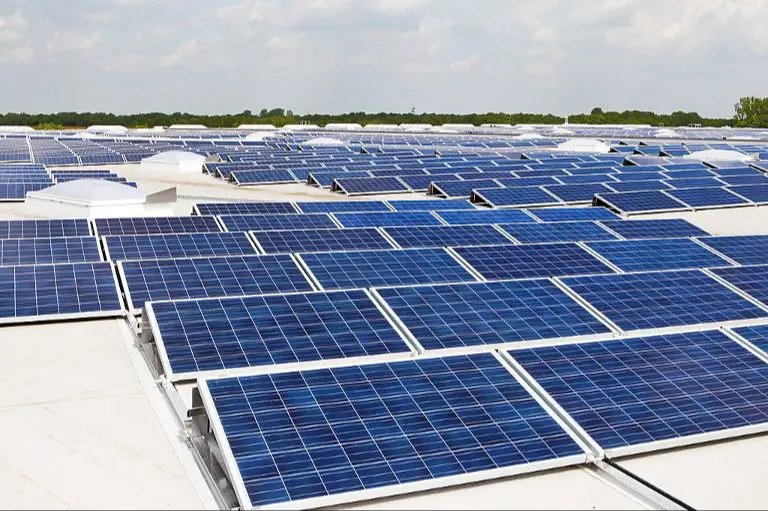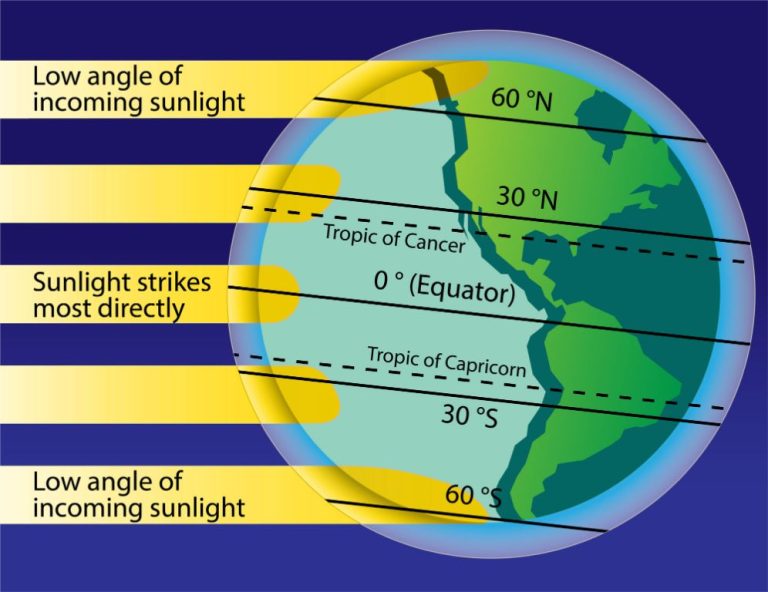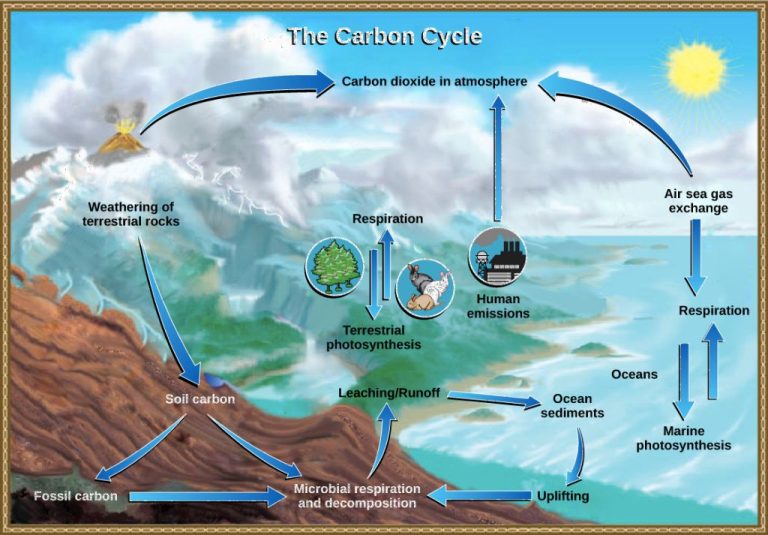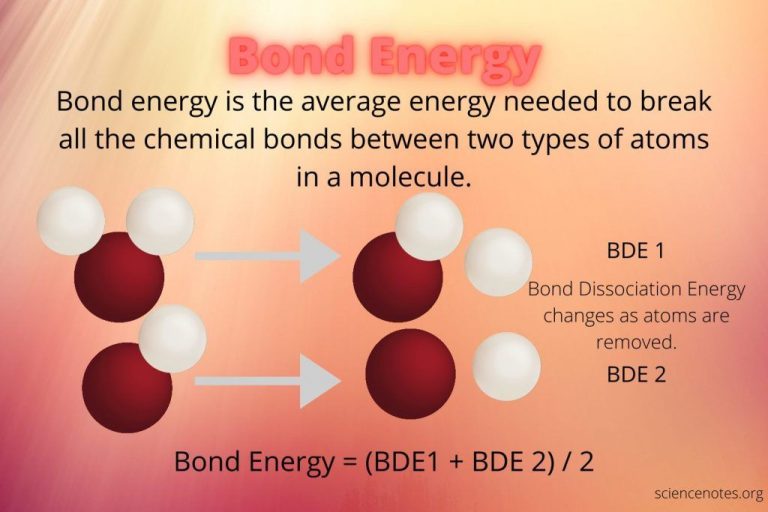What Energy Isn’T Renewable?

Non-renewable energy comes from sources that will eventually run out or will not be replenished in our lifetimes. The most significant sources of non-renewable energy are fossil fuels, including coal, natural gas, and oil. Nuclear power using uranium is also considered non-renewable. These energy sources are being depleted much faster than they are formed by natural processes. Fossil fuels supply around 80% of the world’s energy demands, which brings up concerns around peak production and long-term sustainability.
Understanding non-renewable energy is important because our modern way of life is heavily reliant on finite resources. We need informed discussions around alternatives and the environmental impacts of using non-renewables. This article will provide an overview of what makes energy non-renewable, the pros and cons, peak production forecasts, alternatives, and the outlook for the future.
Fossil Fuels
Fossil fuels like coal, oil, and natural gas originate from the buried remains of organic matter that was formed millions of years ago. The top fossil fuel producing countries are located where these organic deposits were buried and fossilized over time. The three major fossil fuels each have distinct characteristics and environmental impacts.
Coal is a combustible black or brownish sedimentary rock that formed from buried plant matter in swamps and bogs. The top coal producing countries are China, India, United States, Australia, and Indonesia (Visualizing the Scale of Global Fossil Fuel Production). Coal burning releases emissions like sulfur dioxide, nitrogen oxides, particulates, and mercury, contributing to smog, acid rain, and health issues.
Oil is a liquid fossil fuel composed of hydrocarbons formed from buried organic matter like plankton and algae. The top oil producing countries are the United States, Saudi Arabia, Russia, Canada, and Iraq (The Ten Countries That Dominate World Fossil Fuel Production). Oil spills and extraction contribute to water and air pollution. Oil combustion also releases harmful greenhouse gas emissions.
Natural gas is a gaseous fossil fuel formed by buried organic matter and composed of methane and other hydrocarbons. Top natural gas producing countries include the United States, Russia, Iran, Canada, and Qatar. Natural gas combustion emits nitrogen oxides and carbon dioxide, contributing to smog and climate change.
Nuclear Energy
Nuclear energy comes from the splitting of uranium atoms in a process called nuclear fission. Uranium is a non-renewable energy source that must be mined from the earth. Uranium atoms are split inside a nuclear reactor, releasing a large amount of heat energy. This heat is used to boil water into steam that spins a turbine to generate electricity.
The process of mining uranium and refining it into nuclear fuel requires massive amounts of energy. Uranium mining also leads to environmental impacts like habitat destruction, groundwater contamination, and the release of radon gas. Once the uranium is processed into fuel rods, it can be used in nuclear reactors for 3-5 years before needing replacement.
While nuclear power plants produce energy without any carbon emissions, there are safety concerns associated with them. Nuclear accidents like Chernobyl and Fukushima have demonstrated the potential for disasters if nuclear reactors are not properly maintained or shut down correctly. Storing radioactive nuclear waste also poses challenges, as it must be isolated for thousands of years before radiation levels fall to safe limits. Despite technological improvements, fears over reactor meltdowns and radiation leaks contribute to public distrust of nuclear energy in many countries. Proper oversight and strict safety protocols are necessary to minimize risks from nuclear power.
According to the U.S. Energy Information Administration, nuclear energy represented about 20% of total U.S. electricity generation and over half of its carbon-free electricity in 2019. With uranium resources finite, nuclear is not a renewable energy source. However, it offers a stable baseload power supply without direct carbon emissions. Expanding nuclear power faces hurdles like high costs and public opposition, but proponents argue nuclear energy is vital for mitigating climate change and maintaining energy security.
Pros of Non-Renewables
Non-renewable energy sources like fossil fuels and nuclear energy have some key advantages over renewable sources like solar and wind power. One of the biggest pros of non-renewable energy is abundance. Fossil fuels are still plentiful globally with large reserves that can provide energy for decades to come. According to the U.S. Energy Information Administration, there are enough coal reserves to last over 200 years at current consumption rates [1]. Proven oil and gas reserves are estimated to last over 50 years based on current production [2]. With abundance, non-renewables can provide a reliable and steady stream of energy on demand.
This reliability also makes non-renewables more affordable than alternatives like solar and wind. The infrastructure for fossil fuel energy is already well established globally, and new nuclear plants can provide steady baseload power. This translates into lower costs for energy generation. According to the U.S. Energy Information Administration, coal and natural gas were the least expensive sources for electricity generation in 2021 [3]. The affordability and reliability of non-renewable energy has made it the dominant source of energy worldwide.
Cons of Non-Renewables
Non-renewable energy sources like coal, oil, and natural gas have some major disadvantages and risks. One of the biggest is that burning these fossil fuels leads to high levels of air pollution. According to the National Geographic, burning coal releases toxic chemicals like mercury, sulfur dioxide, nitrogen oxides, and particulate matter into the atmosphere. This air pollution contributes to acid rain as well as respiratory diseases like asthma. Oil refining and natural gas processing also release pollutants. The American Lung Association estimates that 4 in 10 Americans live with unhealthy air.
Extracting and transporting fossil fuels carries health and safety risks as well. Coal mining led to over 500,000 deaths in the 20th century alone, and oil pipelines, wells, and tankers have been involved in devastating spills and explosions. Fracking to access underground natural gas poses threats such as drinking water contamination.
Most importantly, non-renewable energy sources are finite. Kazar’s Electric points out coal, oil, and natural gas deposits took hundreds of millions of years to form, but human extraction and consumption is using them up at a terrifying rate. Peak production is coming for all fossil fuels, after which supply will dwindle while demand rises. This threatens energy access and affordability around the world and puts incredible strain on the environment. Unlike solar, wind, or geothermal energy, fossil fuels cannot replenish themselves on human timescales.
Met Group emphasizes that while fossil fuels currently meet most of our energy needs efficiently and cheaply, the long-term external costs are staggering. Finding sustainable alternatives is crucial.
Peak Production
Hubbert’s peak theory predicts that the rate of oil and gas production in any area will follow a bell-shaped curve over time. M. King Hubbert first developed the theory in the 1950s, predicting that U.S. oil production would peak between 1965-1970. His prediction proved correct, as U.S. oil production peaked in 1970 before declining (Wikipedia).
According to Hubbert’s model, global oil production is expected to peak sometime between now and 2030. Estimates range from 2020 to 2040, with many predictions falling around 2025-2030. The International Energy Agency (IEA) predicted in its 2022 report that global oil demand will peak by 2030 for the first time (Fortune). The IEA cites factors like rising EV adoption, renewable energy growth, and climate policies aimed at reducing fossil fuel dependence.
Natural gas production is projected to peak around 2035, while coal peaked globally in 2013. However, peak production timelines remain uncertain and dependent on many complex factors like technology, economics, climate policy, and energy transitions (IEA).
Alternatives
Renewable energy sources such as solar, wind, hydropower, geothermal and biomass offer clean alternatives to fossil fuels and nuclear energy. According to the International Energy Agency, renewables accounted for over 42% of global electricity generation in 2028, with wind and solar PV doubling their share to 25%.
According to the Center for Climate and Energy Solutions, renewables made up 19.8% of US electricity generation in 2020, with expectations to rise to 35% by 2030. The growth of renewable energy is being driven by declining costs, technological improvements, government policies and increasing environmental concerns over conventional energy sources.
Many countries are rapidly scaling up investments in renewable energy. As per IEA data, renewables are expected to account for 95% of the increase in global power capacity through 2026, with solar PV alone providing more than half. The share of renewables in total energy supply is estimated to rise from 15% in 2021 to over 30% by 2030.
Environmental Impacts
The environmental impacts of nonrenewable energy sources like fossil fuels are vast and can be catastrophic. Burning fossil fuels releases greenhouse gases like carbon dioxide and methane into the atmosphere, which trap heat and contribute significantly to global climate change. According to the EPA, the electric power industry accounted for 25% of U.S. greenhouse gas emissions in 2019, with a large portion coming from coal and natural gas power plants. Other estimates state fossil fuels contribute to over 75% of the world’s greenhouse gas emissions.
Fossil fuel extraction and transportation can also destroy habitats and ecosystems. Coal mining practices like mountaintop removal can obliterate forests and contaminate water sources. Oil spills, like the BP oil spill in the Gulf of Mexico in 2010, can wreak havoc on oceans, beaches, and wildlife. According to the Environmental and Energy Study Institute, the BP oil spill affected over 1,300 miles of shoreline and resulted in the death of hundreds of thousands of birds and marine animals.
The waste products from burning fossil fuels, like coal ash, can be equally destructive. Coal ash contains heavy metals like mercury, lead, and arsenic that can contaminate groundwater and drinking water supplies. Proper disposal and containment of coal ash is critical to minimizing environmental contamination.
Outlook
According to the National Geographic, future energy demand is expected to increase dramatically as the global population grows and countries like China and India continue to industrialize https://www.nationalgeographic.org/encyclopedia/non-renewable-energy/. While non-renewables will continue to meet much of this demand in the short term, supplies are finite. The US Energy Information Administration forecasts that global oil production will peak between 2040-2050, while natural gas production will peak around 2070 https://www.eia.gov/outlooks/aeo/.
Transitioning from non-renewables to renewable energy sources poses political, economic and technological challenges. Government policies like carbon pricing and clean energy mandates can help drive this transition, but face resistance from fossil fuel interests. Significant investments in renewable energy infrastructure and storage will be needed to overcome intermittency issues with sources like solar and wind power. Public education on energy efficiency and conservation also has an important role to play in reducing future demand growth.
While moving away from non-renewables may take decades, many experts argue it is imperative for mitigating climate change risks and ensuring long-term energy security. With the right policies, investments and collective action, a sustainable global energy system free of coal, oil and gas is possible this century.
Conclusion
Fossil fuels and nuclear energy don’t classify as renewable energy, as their fuel sources are finite and will eventually be depleted. Non-renewable energy sources currently make up over 80% of global energy production, supplying much of the world’s transportation, electricity, and heating needs. While they have powered economic growth for decades, non-renewables face challenges with peak production, environmental impacts, energy security, and long-term sustainability. As supplies decline and demand rises in the future, renewable energy sources will become increasingly important. There is a global shift underway towards green energy solutions, though non-renewables will continue playing a major role through the transition. Citizens and policy makers need to make informed choices about energy production and usage, weighing pros and cons of all options. Conservation, efficiency, technology improvements, and lifestyle changes will also be key. This balanced mix of energy sources and responsible consumption can lead to a more sustainable energy future.





